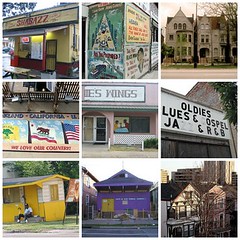Razing issues, again
Some of the best-known razing of public housing has been in Chicago. Less widely understood is that while Chicago did tear down some notoriously bad-for-living projects, it renovated others. In light of this, a thoughtful op-ed in the T-P asked recently: "Can HANO follow its Chicago counterparts in distinguishing between bad housing projects, which need to be torn down, and good ones, which don't?" Once again, Lafitte is cited as an example of public housing that should, perhaps, be saved.
Lafitte's handsome, people-scaled two- and three-story buildings are set in what used to be gardens before decades of neglect. They were built solidly and with great care by Creole craftsmen who would not be surprised that Katrina didn't do much damage.
The architecture here clearly did not cause the residents' suffering; it fell victim to drugs, crime, poverty, poor schools and lack of opportunity, just as they did.
Lafitte's buildings are mirrored all over the country in postwar middle-class housing complexes still in congenial service in close-in suburbs, even though these aren't as solidly built. And other public-housing officials are rehabilitating older garden-style projects.
The Chicago Housing Authority, while still demolishing the 28 monstrous high-rises of the Robert Taylor Homes, has renovated the 454-unit garden-style Trumbull Park project, built in 1938 with a scale and quality that resembles Lafitte, which was built three years later.
[Thanks CRF]



<< Home